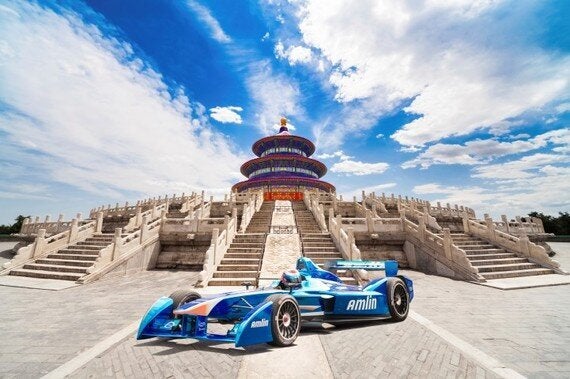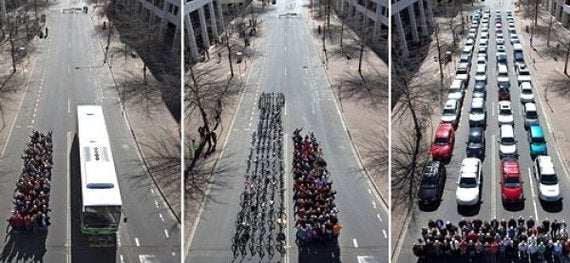By Mark Preston
When I was a student engineer I wanted to build my own road car. I planned out how much it would cost, where I would buy parts, what would I use as a donor vehicle, how would I manufacture the bodywork and most importantly: what engine would I use? I didn't want to make just another kit car, it had to be scalable, and with my own engine. And that's where I ran into trouble.
If you look at most low volume specialist cars today they have to use an engine from one of the top Original Equipment Manufacturers (OEMs): for example Lotus uses Toyota engines in their cars. This makes the Internal Combustion Engine an important part of an OEM's differentiation in the market and a large barrier to entry for new would-be manufacturers. The sheer number of requirements for the development of a new internal combustion engine today is enormous: €500m would be a good round number to start with!
But what happens when the internal combustion engine is removed from the equation? Which is the case with an electric car. Electric motors have existed for over 100 years and they are in almost every common household device from a fridge to an air conditioner. The barrier to market entry is suddenly reduced considerably and allows a whole range of possibilities. The design of an electric vehicle, although complicated and complex, is not too dissimilar to designing a modern high end smartphone. It is still difficult, but not an insurmountable challenge. Many large companies would be very capable of designing and manufacturing an electric vehicle with the help of any number of large engineering companies that exist.
The innovation to drive the electric Powertrain development and concepts such as wireless charging will come from one of the newest motorsports in the world, the FIA Electric Vehicles Series: Formula E. Our team, Amlin Aguri, had its first race in Beijing this year and we believe that Formula E will help to revolutionise the technology required to drive development in the road going world.

Amlin Aguri in Beijing for the first FIA electric car race.
The change brought about by Foxconn's investment in the market, and the advent of new competitive motorsport arenas, to push development will create new entrants and possibly the disruptive change in the automotive industry to the same level as other industries that are described in great detail in Clayton Christensen's The Innovator's Dilemma. The recent announcement by Foxconn is an interesting example of the future of the world's largest manufacturers and it could be the start of more movements by Apple, Google and others into one of the oldest markets in the world: transportation. The Chinese government has stated in the past that strategically there is no reason for home grown car companies to develop ICEs; it would be better to leapfrog to full EV where the playing field is much more equal.
With the added innovations through driverless capabilities, like new driverless buses, maybe the new innovators will change the market as fast as smartphones did in the mobile market. Initially rapid change is unlikely because of the higher capital intensity of a car, compared to a phone, and the sheer number of vehicles that would have to be replaced throughout the world. But with 80 million vehicles being produced every year, it is not unfathomable that new competitors could make a dent in urban markets in the megacities of the world.
Switching to EVs helps to alleviate the pollution problem in urban centres, though it doesn't remove the congestion. As part of a recent study I carried out in Oxford, UK, which involved the University of Oxford, Oxford Brookes University and the County Council, we looked at the problems of capacity in a small city with only five main roads entering the city centre. The photo below illustrates that, by running higher density of people, in this case with buses or bicycles, the capacity of the arteries is increased.

Density of travel for the 70 people using cars, buses, bicycles and walking.
Therefore the trajectory of development in transportation will be driven by urbanisation, especially in megacities of the world which have the populations and hence the spending power to make real changes. The concept is well described in Frost and Sullivan's MegaTrends study. The resultant changes in the industry will move towards mobility becoming a service: i.e. mobility as a Service. At this point it is highly possible that vehicles become a set of "devices" on a network integrated by overall systems integrators: similar to the telecoms integrators such as Vodafone and Telefonica. These vehicle systems integrators will operate different devices on the network that could be provided by existing and incoming device manufacturers - such as Foxconn or Google.
Is the move by Foxconn technology group to invest heavily in electric vehicles in China just the start of something far larger? We at Amlin Aguri think so.
Mark Preston is the Team Principal of Formula E racing team: Amlin Aguri.
Mark will be speaking at "Eco Machines: Designing the Cars of the Future" hosted by Intelligence Squared and Shell at Saint Catharine's College, Cambridge on October 21st 2014.
